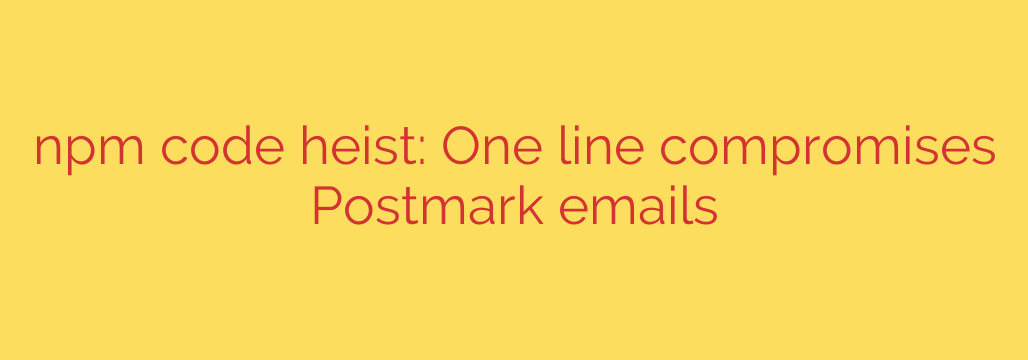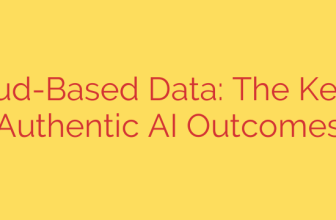
Anatomy of a Supply Chain Attack: How One Line of Malicious Code Hijacked Developer Secrets
In the fast-paced world of software development, we rely on a vast ecosystem of open-source packages to build applications quickly and efficiently. But this convenience comes with a hidden risk. A recent security incident serves as a stark reminder of how a single, malicious line of code buried within a seemingly harmless package can compromise an entire application, exposing sensitive data and secrets.
This attack wasn’t a complex, multi-stage operation; it was a devastatingly simple and effective software supply chain attack that exploited the trust developers place in package managers like npm. Let’s break down how it happened and what you can do to protect your projects.
The Attack: A Deceptively Simple Heist
The core of this vulnerability was a malicious package published to the npm registry. This package was cleverly designed to impersonate a legitimate, albeit outdated, dependency. Developers installing it would have no immediate reason to suspect anything was wrong.
Here’s how the attack unfolded:
- A Malicious Dependency: Attackers uploaded a package containing a tiny, one-line piece of obfuscated code. Obfuscation makes the code difficult for humans to read, allowing it to bypass casual inspection during a code review.
- Targeting the Crown Jewels: This single line of code was engineered to do one thing: scan for and steal environment variables. In modern applications, environment variables (
process.envin Node.js) are the standard way to store sensitive secrets like API keys, database credentials, and authentication tokens. - Data Exfiltration: Once the malicious code executed, it collected all the environment variables from the server it was running on. It then sent this data to a remote server controlled by the attackers.
The primary target in this specific incident was the Postmark API key, which would allow attackers to send emails on behalf of the compromised application. However, the code was indiscriminate—it grabbed all environment variables, potentially exposing every secret the application relied on.
The most alarming aspect of this attack was its simplicity. A developer would only see a new dependency added to their package.json file. The malicious payload was so small and well-hidden that it could easily go unnoticed.
Why This Vulnerability is a Wake-Up Call
This incident highlights a critical weakness in the modern development pipeline: the software supply chain. Every time you run npm install, you are trusting code written by countless unknown developers.
This attack vector is particularly dangerous for several reasons:
- Erosion of Trust: It undermines the fundamental trust we have in the open-source ecosystem.
- Difficulty in Detection: Unlike a brute-force attack on a server, this threat is internal. The malicious code runs with the same permissions as your application, making it difficult to detect with traditional firewalls.
- High-Value Target: Environment variables are considered a secure way to manage secrets, keeping them out of version control. This attack directly targets that best practice, turning a security measure into a vulnerability.
Protecting Your Applications: Actionable Security Best Practices
While these threats are sophisticated, you are not powerless. Adopting a security-first mindset and implementing robust defensive measures can significantly reduce your risk.
Here are essential steps every development team should take:
Regularly Audit Your Dependencies: Use built-in tools to scan for known vulnerabilities. The command
npm auditis your first line of defense. Integrate this into your CI/CD pipeline to automate the process.Lock Your Dependency Versions: Always commit your lock file (
package-lock.json,yarn.lock, orpnpm-lock.yaml). This ensures that you are always installing the exact same version of every dependency, preventing unexpected updates that could introduce malicious code.Carefully Vet New Packages: Before adding a new dependency, do your homework. Check its weekly downloads, the number of maintainers, its GitHub repository activity, and the date of its last publish. A brand-new package with few users impersonating a popular one is a major red flag.
Implement a Content Security Policy (CSP): A strong CSP can prevent your application from sending data to unauthorized domains. By whitelisting approved endpoints, you can block data exfiltration attempts like the one used in this attack, even if the malicious code executes.
Leverage Automated Security Tooling: Consider using third-party services like Snyk, Dependabot (built into GitHub), or Mend. These tools provide advanced scanning, monitoring, and automated pull requests to fix vulnerabilities as soon as they are discovered.
Isolate and Restrict Permissions: Whenever possible, run applications with the minimum required permissions. If a process doesn’t need network access or file system access, restrict it. Containerization technologies like Docker can help enforce this isolation.
Conclusion: Vigilance is Non-Negotiable
The software supply chain is now a primary target for attackers. The ease with which a single line of code can compromise sensitive data proves that we can no longer blindly trust the packages we install.
By adopting a defense-in-depth strategy—combining automated audits, careful package vetting, and network-level policies like CSP—you can build a more resilient and secure application. In today’s threat landscape, proactive security isn’t just a best practice; it’s a fundamental requirement for survival.
Source: https://go.theregister.com/feed/www.theregister.com/2025/09/29/postmark_mcp_server_code_hijacked/








